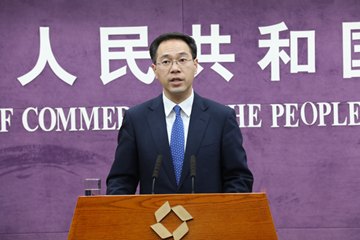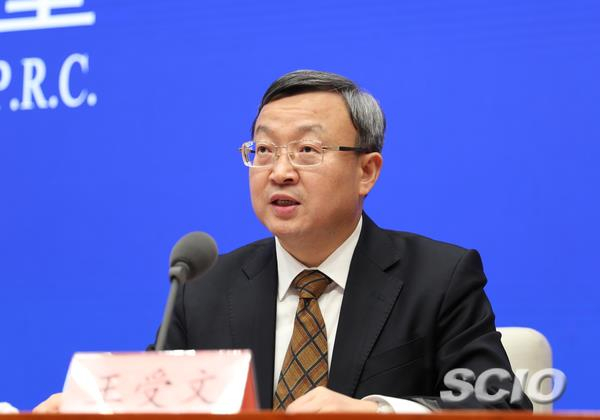The world's two largest economies have spent nearly two years embroiled in a bitter trade dispute complete with controversy and tit-for-tat fighting.
The feud has pushed the world to the edge of a possible global recession. The International Monetary Fund has adjusted its expectation for this year's global economic growth to three percent, down 0.5 points from its forecast in January 2019.
I think many people, including I as a CGTN reporter, didn't expect this dispute would evolve to such a big scale and long-lasting trade war. But fortunately, the two nations have achieved a periodical accomplishment that they reached consensus on the text of the phase-one agreement. But that took 21 months and 13 rounds of high-level trade negotiations, as well as two meetings of the presidents of the two countries.
Since March 2018, the China-U.S. trade dispute began amid America's 301 investigations into China's trade practices and treatment of intellectual property. The U.S. started slapping tariffs on Chinese goods and China did likewise. The back-and-forth escalated into a trade war in July of last year.
The two countries' lists covered nearly all categories of the other side's exports.
The flames of fury burned throughout 2019, with numerous accusations from the U.S., including calling China a "currency manipulator."
The two countries had their 11th round of trade talks in Washington on May 9 and 10, with positive statements from both sides. But suddenly, Washington took a series of actions that made the matter worse. It announced its plan to impose 25 percent additional tariffs on Chinese goods. And Beijing decided to retaliate.

Gao Feng, the spokesman of the Chinese Ministry of Commerce. /MOFCOM Photo
Gao Feng, the spokesman of the Chinese Ministry of Commerce. /MOFCOM Photo
"China is strongly against America's actions of bullying and imposing extreme pressure. Adding tariffs will not do any good for resolving the trade dispute. But if the U.S. insists, China will have to respond. China is never afraid of any pressure," said Gao Feng, the spokesman of Chinese Ministry of Commerce (MOFCOM).
Washington also put 28 Chinese institutions and companies, including the Chinese telecom giant, Huawei, on an entity blacklist. It makes it almost impossible for a company on the list to purchase U.S.-made goods.
The two sides were trapped in a deadlock for two months. They finally seized an opportunity to melt the ice. The two presidents met a G20 summit in Japan at the end of June. With the positive signal sent out from the meeting, trade talks resumed soon after, and they announced they were working on the phase-one agreement.
They kept the work low-key. After that, at almost every weekly news briefing of the MOFCOM, when we asked the spokesman how were the talks, the spokesman Gao, basically gave us a simple answer that they were working on the wording. The news briefing was not as crowded as before, as many reporters felt that there was little news about the trade talks.
Two months later, on December 13, I suddenly received a phone call from the station that there will be an important press conference about the trade war at night. The phone call was made at 8 pm, and I was told the press conference was set at 9:30 pm, but then it was pushed back to 11 pm.
Six Chinese vice-ministerial level officials, who have been closely involved in the trade negotiations, from the Party and government, held a joint press conference at the State Council Information Office. Those officials work in the areas of agriculture and rural affairs, commerce, foreign affairs, national development and reform. They announced that Beijing and Washington had reached a consensus on the text of the phase-one agreement.

Wang Shouwen, Chinese Vice Commerce Minister, introduced the context of the phase-one agreement at the join press conference on December 13, 2019. /SCIO Photo
Wang Shouwen, Chinese Vice Commerce Minister, introduced the context of the phase-one agreement at the join press conference on December 13, 2019. /SCIO Photo
Chinese Vice Commerce Minister, Wang Shouwen, announced at the press conference.
"The text has nine chapters, including an introduction. There are chapters on intellectual property rights, technology transfer, food and agriculture, financial services, currency and transparency, expansion of trade, bilateral evaluation, and a final resolution."
Wang added that "the two sides agree that the U.S. will implement its commitment to canceling its added tariffs on Chinese goods step by step."
Nine questions were raised during this one-hour long press conference, covering the impacts on some key areas, including agriculture, tariffs, and intellectual property rights.
It's the first consensus inked on paper, and I would call this a real truce declaration. It sends out a clear signal that the two countries are going to cooperate, not fight. It's also in line with China's consistent direction and long-term strategy of economic reform and opening up.
I believe it will standardize the two countries' engagement in many sensitive areas, such as intellectual property rights, and technology transfers. It will better protect the interests of both Chinese and American companies and smooth the two countries' bilateral trade.
It will also help clear away the confusion and worries of global investors, and facilitate potential investments and those investments that were pushed back by this trade war. The will-be canceled additional tariffs will also serve as a positive force for global trade.
More importantly, the positive, clear, stable, and confident context this document creates is significant for the two countries' economic development, their economic engagement, as well as the global economy.